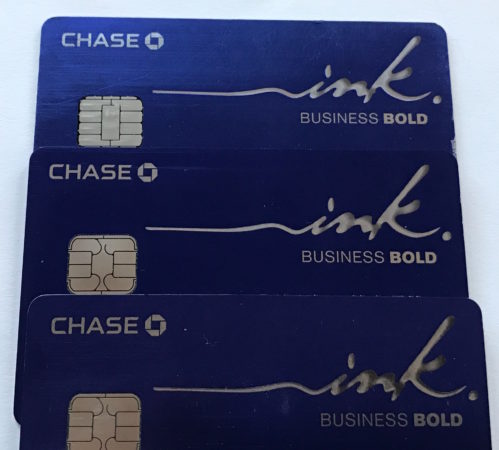People Aren’t Signing Up For Credit Cards Offered By American And United Airlines. Here’s My Opinion Why Not

An educated consumer is a powerful thing. In various ways, I think that’s what lead to both American and United Airlines widely missing their estimates on revenue from their co-branded credit card relationships.
I refer to two recent posts by View From The Wing. American Airlines was first to announce a “miss” on credit card revenue, potentially as much as $200 million in the most recent quarter. United Airlines discussed earnings earlier this week and noted that credit card sign-ups are sluggish with them as well. But, why? Let’s look at some reasons.
Significant Program Devaluations
This is the popular refrain I hear from folks. The Big 3 all made big changes that were mostly worse for some of their best customers. Those changes lead to less “stickiness” on the part of those customers. Delta was the first one to start changes, eliminating award charts and changing their earning to a revenue-based structure.
United Airlines broke out the photocopier, rolling out the exact same changes as Delta. American held off while they were in the process of merging with US Airways. Then, they borrowed United’s copy machine. They at least had the foresight to move a few commas, but ended up with mostly an identical structure to the other two. Not to be outdone, United finished up with a thorough mucking of their award booking rules, making it much harder for customers to book the awards they wanted.
Is that what lead customers to stop signing up for credit cards? It’s a reasonable argument. There’s less reasons to be loyal to a specific airline now, since the programs are so similar. That means business travelers are more “hub captive”, flying with the airline who has the dominant position at their home airport. It also leads to those same business travelers filling in random flights on other carriers if the routing and price are agreeable.
Translation: elite status is less appealing than it used to be.
Consumer Education/Choice
If you’re a regular reader of this blog, chances are you don’t have 15 different credit cards in your wallet. I have a whole bunch, and some of my craftier/crazier friends have double or triple the amount I have. Most folks I meet have 1 or 2 credit cards they use on a regular basis.
The last few years have seen a number of great flexible currency credit cards enter the market. What do I mean by that? I’ll use Chase Ultimate Rewards as the best example. Cards like Chase Sapphire earn bonus points for certain categories (dining, for example). Those points transfer on a 1:1 ratio to partners like United Airlines. But, Chase has more than a dozen such partners. Just like you wouldn’t put your entire retirement nest egg into one stock, customers are learning the valuable of more flexible points.
Starwood Preferred Guest was really the pioneer here, establishing very generous transfer ratios to many airlines. American Express has generally been in this business for a while with Membership Rewards, though with mostly less rewarding transfer ratios. Chase put some really nice cards out there, like Sapphire Reserve and the Ink cards for business owners.
Then, they poured gasoline on the fire with Chase Sapphire Reserve. That card earned even more points in certain categories. Those points are worth more when buying an airline ticket versus transferring them to airlines. And, they featured a 100,000 point sign-up bonus when they launched the card.
Chase noted how red-hot sign-ups were. That’s definitely taking customers out of the marketplace for airlines like American and United.
Customers “Trading Out” Of Miles
To some degree, the airlines are victims of their own success. Planes are more full than they’ve been in a long time. Airlines are getting very good at yield management. With the advent of Basic Economy fares, they can offer a number of different revenue products to their customers. Business is booming, thus less total award seats.
Couple that with a compelling product like the Costco Visa Card from Citibank. I happen to be a Costco nut. I took a long hard look at this card recently and applied for it. It’s now getting part of my wallet share, but it’s almost certainly getting a big chunk of wallet share from Joe Public. It offers 4% back on gas and 3% back on dining and travel. That’s likely enough to motivate folks to change their spending habits.
The Final Two Pennies
I don’t think the answer lies simply in the damage the airlines have done to the value of their loyalty programs. Very few people I meet are as, ahem, enthusiastic about the finer points of airline loyalty as I am. I’m sure many loyalty program members don’t even know the airlines switched to a revenue-based earning model.
The landscape is more nuanced. The airlines and hotels used to create a 1:1 bond with customers via their loyalty program and, by proxy, their co-branded credit cards. Flexible cards like Chase Sapphire Reserve and the SPG American Express gave customers more choices. And, “cash back” cards became more lucrative.
As the economy improves and banks offer more lucrative sign-up bonuses, they’re betting they can retain customers long enough to pay off that initial investment. Everyone is betting on the same pie. Sooner or later, they’re all fighting for the same crumbs.
The post People Aren’t Signing Up For Credit Cards Offered By American And United Airlines. Here’s My Opinion Why Not was published first on Pizza in Motion


The decline of card applications(and subsequent revenue) simply goes back to the lack of seat availability, especially on American. I probably get 3 or 4 mail and email solicitations for decent-sized sign and spend bonuses for AA and UA branded cards. I laugh at the AA mail but I at least glance at UA. Problem is the 5/24 issue with Chase so my UA stuff gets tossed.
I wonder how Citi/Barclays and Chase feel when fewer and fewer and people send revenue their way because American and United “revenue management” teams are destroying the FF programs? Even Chase might be hurting themselves.
A few folks have brought up 5/24. I think it’s a factor, but I don’t think hard-core mile geeks are a big part of their revenue generation here. I agree that the lack of saver award availability makes the offers less enticing for everyone. More miles chasing less seats.
I think it’s a combination of issues. As a points/miles hobbyist I know how hard it can be to find award space. Even harder to find award space without 5am flights and 4 connections to get to Europe.
Imagine Joe Public as they fall for the offer on board a flight for “30,000 miles or enough for a free trip !” on the annual trip to see Grandma. Later after the 30k hits they go and try to book the next vacation or trip to see Aunt Martha only to find that that free trip from Cleveland to Chicago requires 40k in miles, that they leave at 5:42am and connect in Miami. Later after they get home all jet lagged they start seeing offers for Capital One, American Express, Costco and find a mailbox full of Discover 2% back offers. Pair that with the spouses obsession and foolishness that Kohl’s cash is actually a good thing and they no longer put spend on or apply for airline cards.
Miles are getting harder and harder to use. I love this hobby and will search out the best deal for using miles. A lot of people won’t. I got my coworkers into the points and miles game and they get frustrated with all the rules and trying to find saver availability. It’s tough. People don’t want to invest time into it and I get it. Cashback is going to be king again soon…
I agree with all of the above. Further, it now has risen to the point of a personal affront that airlines take the position that we sold you (via bank credit cards or shopping, etc.) sufficient miles to fly anywhere on our system, but, we actually throttle your ability to do that to a couple of seats out of the hundreds of seats on our planes. It is a classic bait and switch. It is the airlines version of a “no pay” or “never pay” back to you, “our valued customer,” provision in their contracts they have imposed on us customers.
“It is a classic bait and switch”. You are 100% correct. 100%!!!!
The only way it wound not be bait and switch is if they disclosed upfront that you only have a 10% chance or less, of actually getting the flight you want. If people knew this upfront that the so called “enough miles for a free trip” would be extremely difficult to get, then it would be fair. But of course AA and others don’t want to disclose this, which in my opinion is totally unfair and unethical. The last time I flew AA they were promoting their card and points like crazy on the flight without disclosing how hard it was to redeem the AA miles.
They should be required to do what the drug company’s do with their ads and disclose the possible downsides of their FF program – yeah right!
This really is a morality issue: painting one picture with words and then creating as many practices as possible to make it difficult to for the people they have successfully lured to make that picture a reality.
Collecting airline miles isn’t worth it anymore. Sure you read about all of these bloggers bragging about how they used miles for a $14,000 first class seat from New York to Dubai or some nonsense like that, but that does me no good if availability is so incredibly limited even on domestic short haul flights. Airlines either need to open up availability and stop playing games, or switch to a fixed price model, similar to Jet blue with no blackouts. Miles can be worth a certain amount depending on your fare class.
I have about 30k avios which are supposedly worth $450 according to TPG. Too bad international flights have giant fuel surcharge and the availability for domestic flights via AA is a complete joke. If I was putting all of my spend on the British Airways credit card, I’d be pretty pissed off.
I would say 5/24 is hurting United. I thought it was a bad idea from the start to add that to the United co-branded cards. Although it’s supposed to stop people from gaming the system, I think Chase is hurting themselves with it. If Chase didn’t have 5/24, I know I’d be using more Chase cards and paying more annual fees with them. I personally think Chase is hurting United with 5/24.
I’m going to offer up another, slightly different reason that only anecdotal evidence supports… The airlines are tacky about pushing these things. There was a time when consumers applied for and got the card and it was kind of a status symbol. Like saying, “I have this card because I spend and/or travel enough to make the card worthwhile”. Of course that’s super gauche, but no less true. But now that AA and UA (and DL, I presume) have the FAs hawking these shitty cards at every opportunity, I think consumers no longer see it as that status symbol it once was. Now EVERYONE can have that miles-earning card with the waived annual fee.
I still sign up for AA cards, whenever I can. I like a bonus which is (almost) free.
I cannot get the UA cards anymore due to Chase, but that’s not United’s fault.
I still “earn” Delta miles every month though I seldom use them.
I have some advantages: I am very flexible in my dates for flying and often also my itinerary. I fly only business class when going international (about 4x a year). I fly only Southwest domestically (except Hawaii) as I have the companion pass (maybe 12 flights a year). And I fly Alaska to Hawaii non-stop using miles (3x a year). No business travel, and I am gone about 3 to 4 months of the year – and I still can work remotely! This is heaven.
I do spend about 2 hours a day on this business (hobby), but despite the busy travel schedule above I still accumulate more miles each year than I spend.